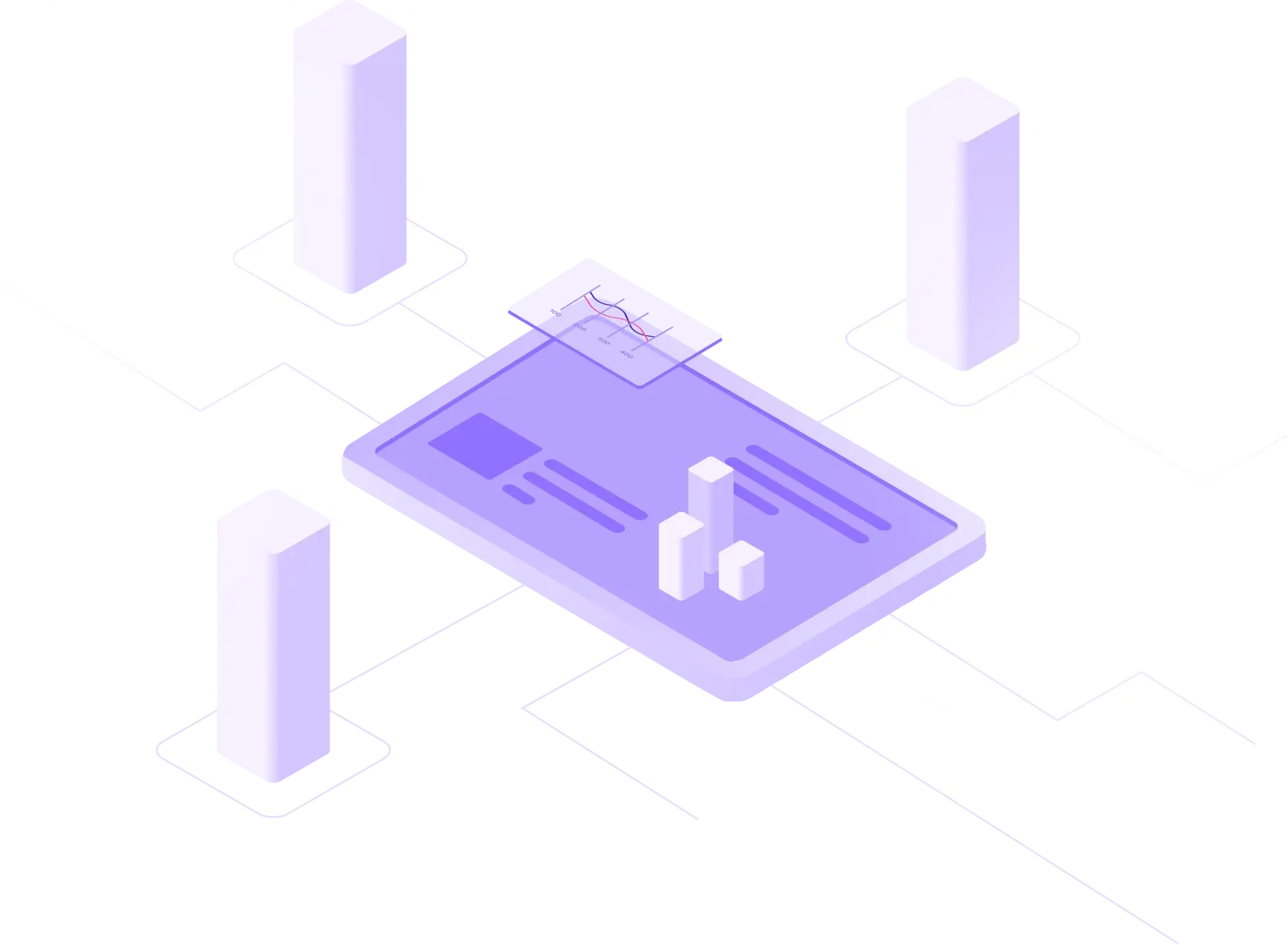Why Building Owners Need a Smarter CMMS to Stay in Control

If you’re a building owner, you’ve probably felt the frustration of managing multiple service providers, wrangling outdated systems, and constantly firefighting to keep your facilities running smoothly.
It feels like you're expending tremendous effort to keep your building running but are not able to see a significant ROI. In theory, it should be simple. In reality, it often feels like a complex juggling act.
The problem? Often, it’s the very tools you’re using, and they’re not serving your interests. Are you truly getting the insights needed to make sound strategic decisions, or are you simply stuck with fragmented systems that limit your visibility and control?
What's wrong with the current system?
Current systems often leave you feeling like you're swimming upstream. The lack of integration, the data silos, and the constant need for manual intervention make it incredibly difficult to gain a clear, real-time view of your operations.
Let's take a deep dive into the problems with the current system.
A. The Disconnect: You Are Missing a Key Piece of the Puzzle in Your Maintenance Strategy
The reality of day-to-day facility management often looks like a Rube Goldberg machine - overcomplicated, inefficient, and prone to breakdowns. So where does the problem lie?
You’re likely confronted with a landscape of disconnected systems, where managing assets (from the delicate sensors of the fire alarm system to the massive cooling units in the basement) is a challenge because each system operates in its own silo.
What’s the result? The inability to see the big picture and manage your operations with a truly strategic approach.
B. The Silos: Incompatible Systems Undermine Your Operational Efficiency
The core of the issue is that building owners are often forced to rely on a patchwork of incompatible systems. And what’s the effect of this reliance? You end up using one system to track tenant complaints, another to manage HVAC maintenance, and yet another to track elevator repairs.
This creates operational silos that limit your view into your operations, undermining your ability to make informed decisions, and making the whole process feel more like a chore than a strategic advantage. Sound familiar?
C. The Visibility Gap: Your Strategic Control Is Compromised by a Lack of Real-Time Data
Think of it this way: you’re trying to steer a ship in the dark, relying on outdated maps and whispered instructions from your crew. And what’s the consequence of relying on outdated data?
As a building owner, you rely on service providers for critical information, but that information often sits locked away within their systems, making it inaccessible or arriving too late to be truly actionable.
You might be facing delays when making critical decisions – whether it’s about replacing a chiller unit or repairing a faulty fire alarm system – because the data is simply not at your fingertips. Does this lack of transparency make it difficult to plan strategically and truly safeguard your investments?
D. The Vendor Struggle: How Poor CMMS Design Creates More Work for Everyone
While your frustrations with outdated CMMS platforms are valid, service providers are struggling just as much. They’re also dealing with disconnected workflows, multiple client portals, and manual data entry that slows them down.
A system that you own, and control should also make life easier for your vendors. By providing a vendor portal with real-time updates, they can log progress, access asset histories, and collaborate seamlessly—all without endless emails, phone calls, or manual workarounds.
When vendors are working more efficiently, your building operates more smoothly, and your maintenance costs go down.
The Solution - Owning Your CAFM for Better Results
It’s time to ditch the old model of relying on systems designed for service providers and instead embrace a platform specifically tailored to your needs. This is where you take charge.
A CAFM isn’t just a piece of software; it’s a strategic asset that enables you to unlock the full potential of your facilities and gain a competitive edge. But what exactly should the platform be comprised of and its functions?
A. Real-Time Visibility: How Does Direct Access to Data Enable Your Strategic Decisions?
Imagine being able to track the real-time status of work orders, analyze the performance of your assets, and review past maintenance records, all from a single, centralized dashboard.
But with all of this in a centralized dashboard, how does that translate to real life benefits? No more chasing down reports or relying on anecdotal evidence.
With your own CAFM, you’ll have the insights you need to make smart decisions about when to repair or replace assets, and where to strategically invest for building improvements. You're not just managing your facilities; you're truly optimizing them.
B. Streamlined Workflows: How Does a Well-Designed System Benefit Your Service Providers?
Here’s the thing: a CAFM system that's well-designed for you, the building owner, should also be a boon for your service providers. And what does that mean in action?
By offering them an intuitive vendor portal, you're not only streamlining your operations but also making their jobs easier. Imagine your service providers having access to all the information they need, from work orders to asset details, in one user-friendly platform.
Less time spent on administrative tasks means more time focused on delivering the excellent service your building deserves.
C. Shared Platform: How Does Collaboration Become More Seamless in Your CAFM?
Forget the days of emails flying back and forth, and data getting lost in translation. A CAFM system that you own can become the central nervous system of your entire operation, creating a shared ecosystem where building owners and service providers can collaborate seamlessly.
It’s about building a network in your facility management that has no bounds. All teams use a single platform, which helps streamline communications and enables everyone to make data driven decisions.
Part 3: The Benefits - Realizing the Potential of Owning Your CaFM
Now, you’ve reached the point where you might be wondering how all of this contributes to something real. We’ll help you understand the advantages of owning your CAFM by going through how this contributes and translates to tangible results that will transform how you operate.
A. Guaranteed Measurable Operational Improvements
By owning your CAFM, you’re essentially taking the reins and designing a platform tailored to your needs and your business. Why would creating something so tailored make a difference?
It allows for optimized performance by integrating all facets of your maintenance operations into a single, comprehensive system. From managing work orders and tracking assets to scheduling preventive maintenance, your operations will be more streamlined, efficient, and cost-effective than ever before.
It's not just about incremental upgrades; it's about a complete transformation in the way you manage your facilities. It’s about building a process that’s truly optimized for your unique needs.
B. Hours of Time Reclaimed from Manual Processes
With a CAFM that you own, say goodbye to hours wasted on manual data entry, endless email chains, and cumbersome report generation.
You can recapture that valuable time and redirect it towards core tasks that truly drive value for your organization, such as strategic planning, tenant engagement, and exploring new business opportunities.
Imagine what you could achieve with all that extra time. So in terms of actionable points, how would the automation of the CAFM system contribute to time savings?
C. Reduced Spend
Here’s a key point: owning your CAFM means owning your data. By taking control of your operational data, you're able to identify areas of overspending and make data-driven decisions for better resource allocation.
You can strategically plan maintenance activities, optimize asset lifecycles, and eliminate wasteful spending, ultimately driving greater cost efficiencies for your facilities. So with the data that the CAFM provides to you, what would you do with all the data and how would it contribute to minimizing expenses?
D. Enhanced Accountability and transparency
Transparency is the key to building trust and fostering accountability. When you own your CAFM, you control who has access to what data, and you set the standards for how that data is used.
By promoting transparency and creating an environment where everyone is responsible for their actions, you can build a more reliable and collaborative ecosystem for your entire operations. But how does owning data lead to transparency and better trust?
E. Competitive Advantage and Better Market Position
In today's competitive market, tenants and clients are demanding more than just functional space. They want a seamless experience, reliable service, and a commitment to sustainability.
By offering superior facility management, you can create a more attractive environment and enhance your overall value proposition, giving you a distinct competitive advantage. So in the long run, with the seamless experience that we want for all users, what is the long term impact?
F. Data-Driven Proactive Maintenance Planning
Owning your CAFM empowers you to move away from reactive firefighting and towards proactive planning. By leveraging real-time data on asset performance, you can anticipate potential issues, schedule preventive activities, and optimize the lifespan of your equipment.
The result is less downtime, lower maintenance costs, and a more resilient infrastructure. If proactive, data driven strategies were to be implemented, how would they impact your budget, business, and operations?
The Time to Act Is Now: Why Waiting Will Cost You More
Every day you continue operating with disconnected, outdated systems, you’re losing money, wasting time, and allowing inefficiencies to creep deeper into your building operations.
Facility management is evolving—are you keeping up? The best-run buildings aren’t relying on legacy CMMS platforms that force them into workarounds. They’re investing in smarter, integrated systems that put them in full control.
This is your opportunity to move beyond frustration, inefficiencies, and reactive management. Take control. Own your CMMS. Set the standard for smarter facility management.
The choice is yours—continue managing maintenance the hard way or switch to a CMMS that actually works for you.

